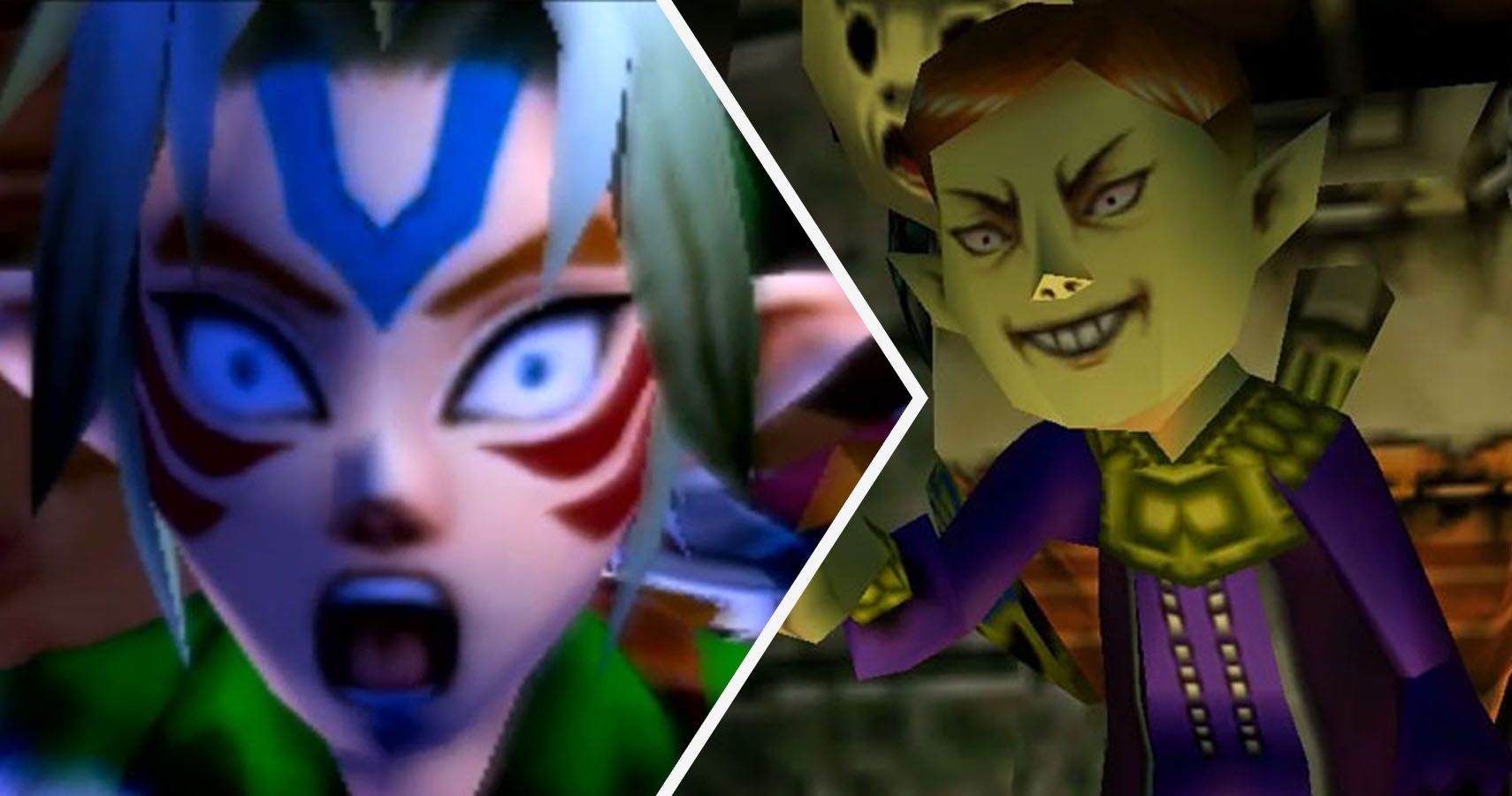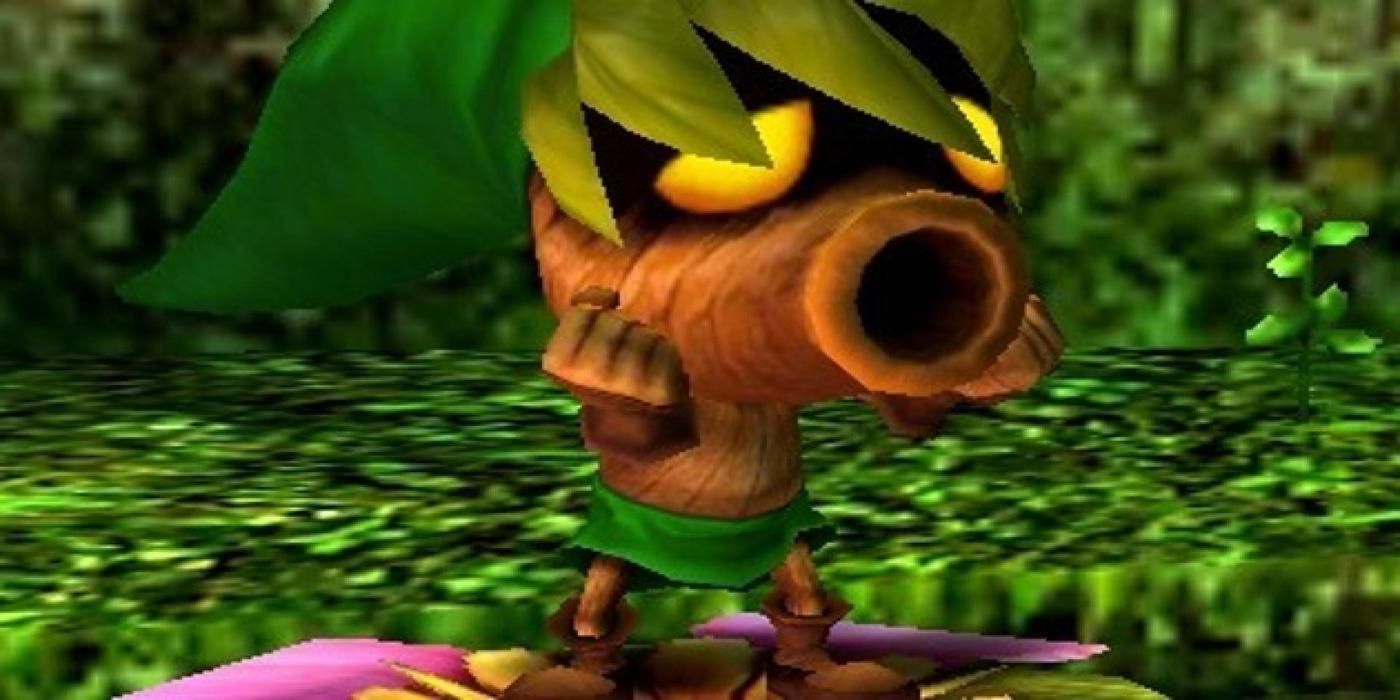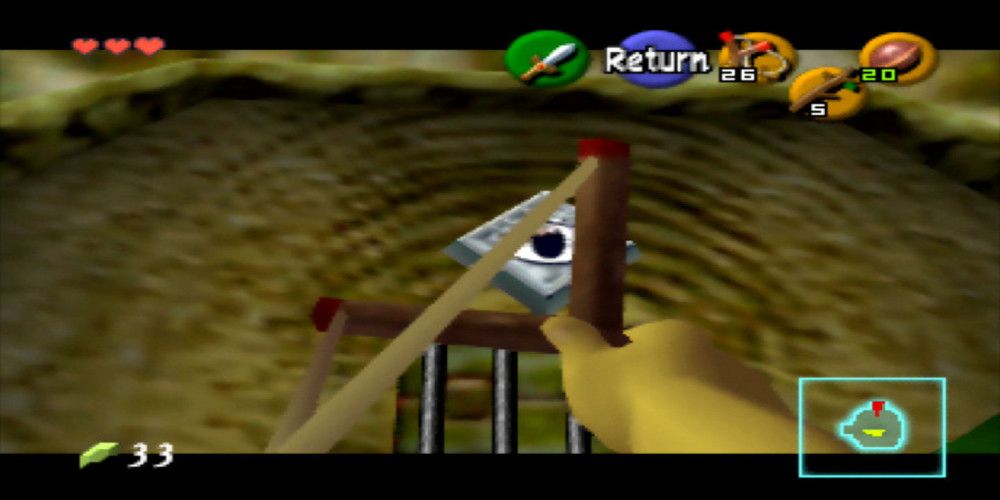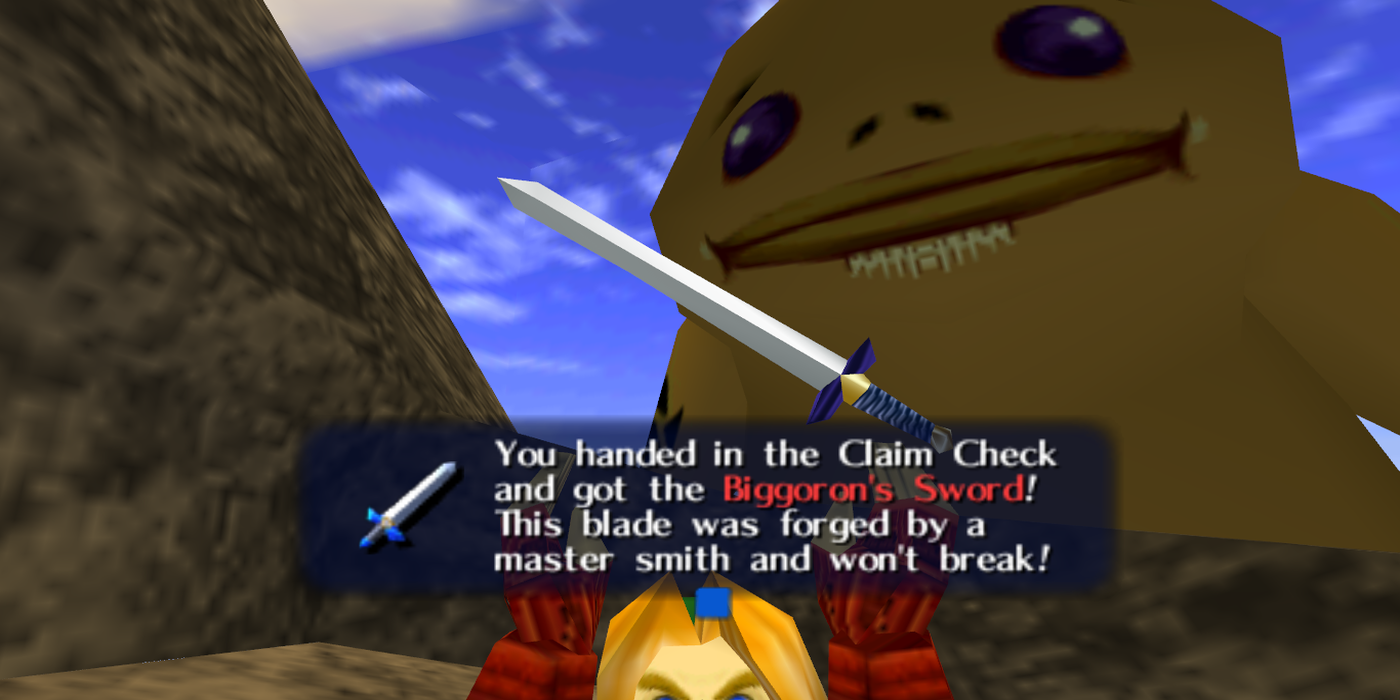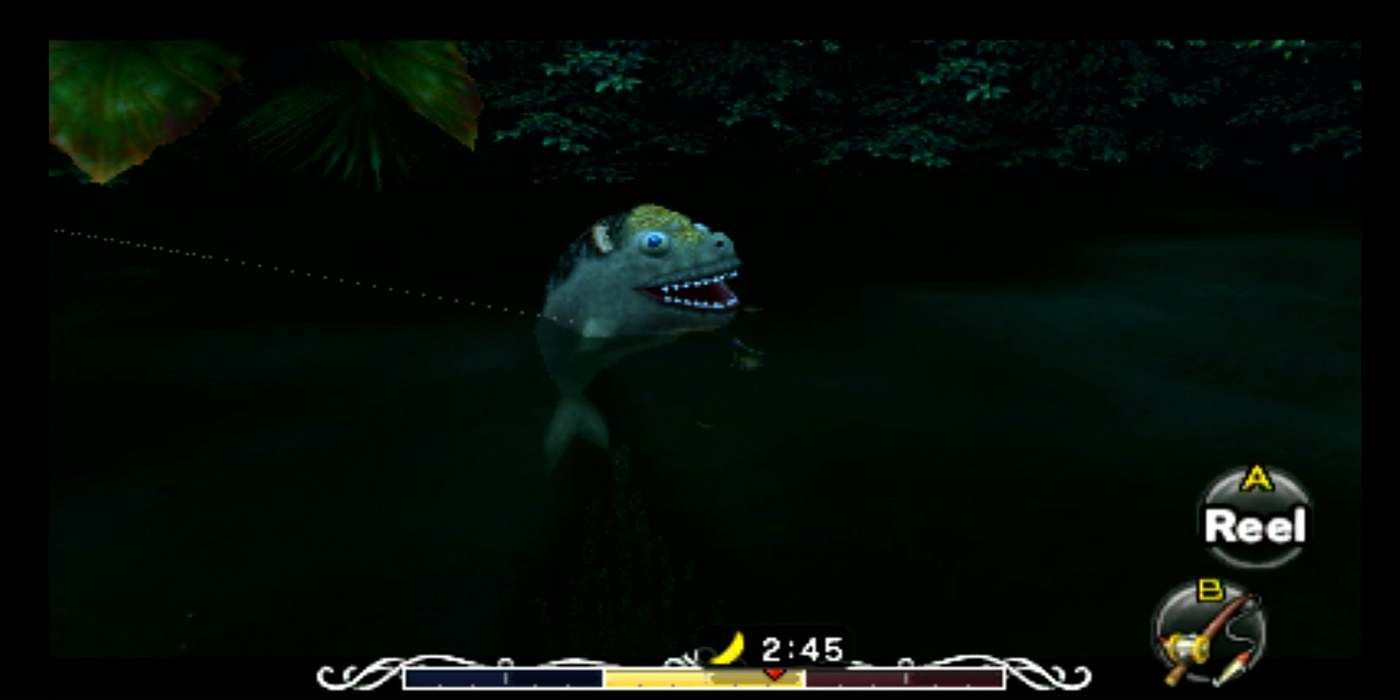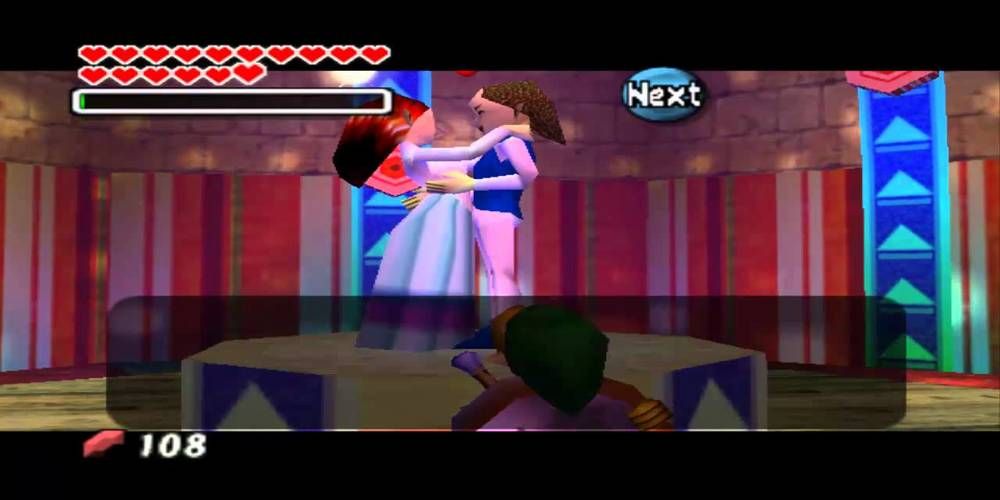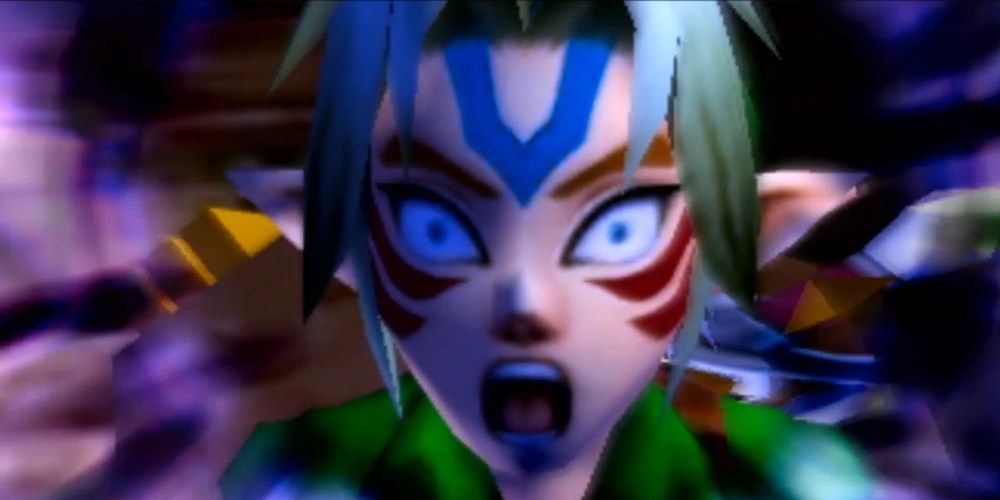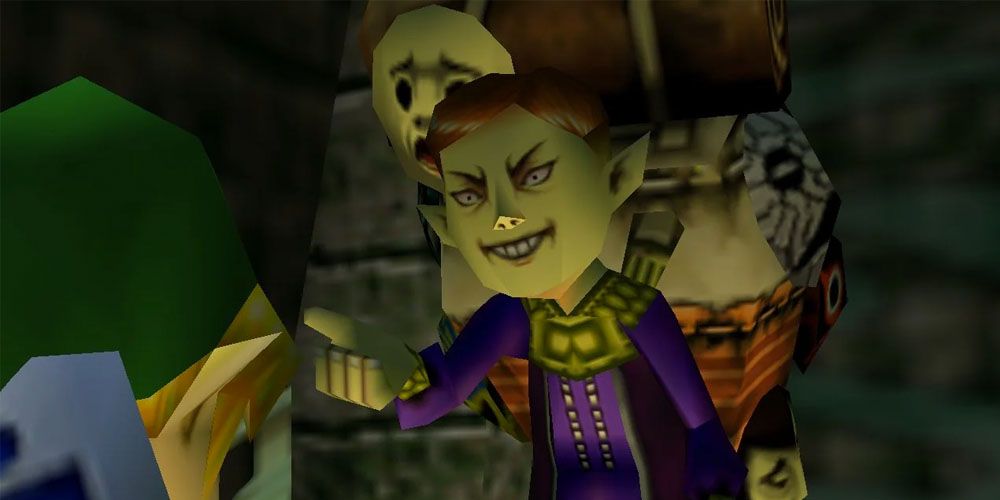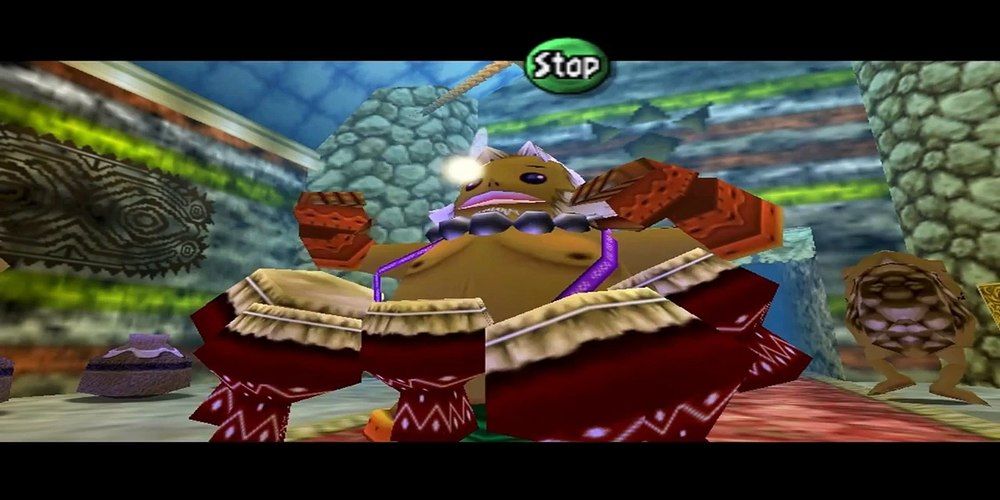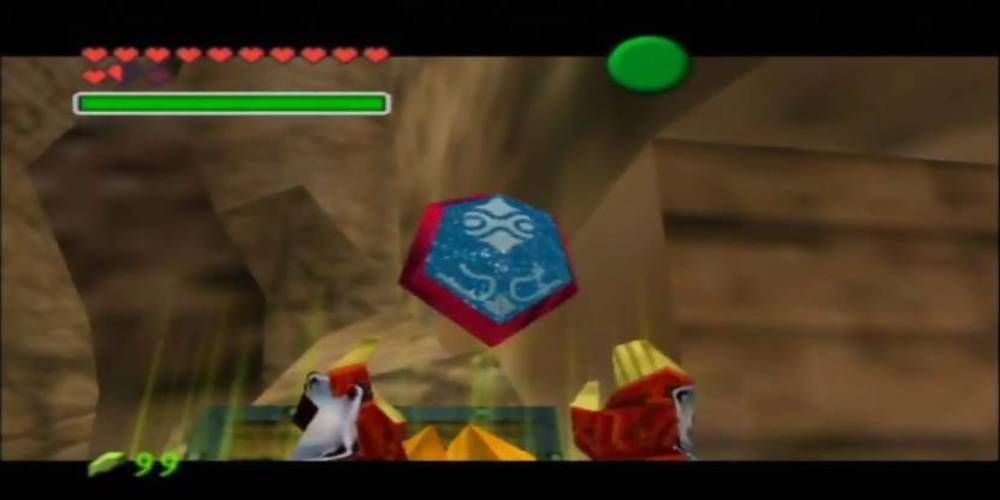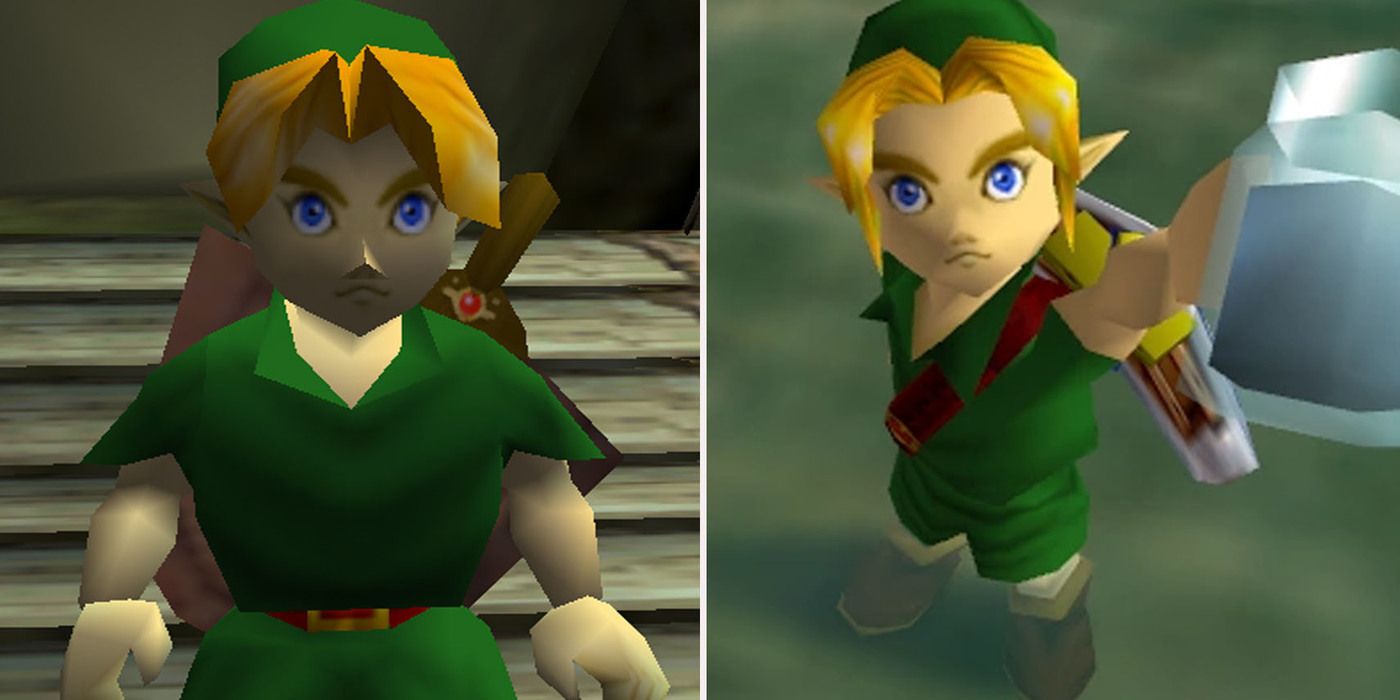Following the release of Ocarina of Time, Nintendo was on top of the worst as far as quality went in the video game world. They had released the definitive video game experience, a title which to this day is essential playing for anyone even remotely interested in the medium. Naturally, the task of following up such a monumental video game weighed on Nintendo’s pressure.
Especially with the limitations placed onto the dev team. With just a year to develop a new Legend of Zelda based on Ocarina of Time’s engine, the Majora’s Mask dev team naturally cut a bit of content out of the game. Beyond Majora’s Mask beginning life as Ura Zelda, there’s quite a bit in the game proper that never made it into the final release.
10 Deku Link Originally Spat Deku Nuts, Not Bubbles
Turning into Deku Link is an opening unlike any other, and solidifies that Majora's Mask will be an unforgettable journey. Stripped of his sword and shield, Link is forced to adapt to a new skill set, one that sees him pitifully weak. Link can't even use a projectile attack until he gains access to magic, but this wasn't originally the case.
As Deku Link was designed to spit out Deku Nuts, not magical bubbles, Link would have been able to use a long-range attack the instant he first picked up Deku Nuts. That said, tying Deku Link's combat prowess to a finite item is counterintuitive. Tying it to magic instead keeps combat balanced as Deku Link while incentivizing players to blow bubbles more often.
9 Fairy Slingshot
Although Majora's Mask features a young Link as the protagonist, quite a bit of effort is made in ensuring the audience understands Link has aged since Ocarina of Time. As far as concept art goes, he's far more confident and self-assured, showing his growth as the Hero of Time. Gameplay-wise, Link notably uses Adult Link's weapons, not his own, suggesting he's coming of age.
Originally, this wasn't going to be the case. Early screenshots of Majora's Mask not only show Link using the Fairy Slingshot in place of the Hero's Bow, his Kokiri Sword is the dagger model from Ocarina of Time while the Deku Shield takes the place of his Hero's Shield.
8 Biggoron Sword
The end goal of Ocarina of Times trading sequence, the Biggoron Sword is arguably the strongest weapon in the game. Not only can it be found within Majora's Mask's data, so can almost every single item in the Biggoron Sword trading sequence. The only item missing, funny enough, is the Claim Check actually necessary for obtaining the Biggoron Sword.
While it's possible the Biggoron Sword was intended to be included at one point, what's more likely is that it was used as a testing tool for the Great Fairy Sword. Both are one-handed, and the Great Fairy Sword is clearly meant to be Majora's Mask's version of the Biggoron Sword.
7 Fishing
Fishing wasn't a big part of Ocarina of Time, but it was a notable one which attracted a decent bit of the fanbase, in large part due to the legendary Hylian Loach. Considering Majora's Mask restrictive one year development cycle, it's possible fishing was always intended to be included. This is in part evidenced by the inclusion of a fishing rod in-game.
Even though the fishing rod was only ever an item usable in the fishing hole– of which there are none in the base Majora's Mask– the rod can still be found in the game's data. It's ultimately useless, but it should be pointed out that Majora's Mask 3D added in two fishing holes (and quite a bit of fish-related content.)
6 Honey & Darling Bowling
Honey & Darling's shop in Clock Town is just one of many mini-game centers in Majora's Mask. Every day, Link can enter the shop to play a new mini-game: from bomb basketball, to archery, to a bombchu toss. By completing each mini-game, Link can earn a Piece of Heart on the last day while also destroying Honey & Darling's relationship in the process.
A link of code indicates that there was another mini-game in development, Honey & Darling Bowling. It's entirely possible the Bombchu bowling gallery would be recreated in Majora's Mask at one point before being replaced with the current Bombchu game.
5 Adult Link Mask
Should Link collect every single mask in the game, he'll be able to trade them in during the final dungeon– the Moon– in order to access mini-dungeons based on the four main Temples (Woodfall, Snowhead, Great Bay, Stone Tower.) They're more or less an optional version of Ganon's Castle, but completing each one unlocks the Fierce Deity's mask.
Transforming Link into a god of destruction, the Fierce Deity's mask is the closest thing Majora's Mask has to an adult Link. Worth noting, however, is the fact an Adult Link mask was originally planned at one point. It was likely scrapped for the Fierce Deity's mask as to ensure Majora's Mask wasn't too similar to Ocarina of Time.
4 A Seven Day Cycle
Honestly, Majora's Mask's 3 day cycle is already pretty ambitious. While not everyone makes full use of Termina's 72 hour schedule, every single NPC has a defined personality, a life which they lead independent of whether or not Link is around, and has something to offer the player– whether that be an item or simply information.
Even more ambitiously, this 3 day cycle was meant to be a proper full week schedule. Nintendo wanted Majora's Mask to take place over the course of 7 days (likely to match Ocarina of Time's 7 years,) but this naturally proved to be a conceptual challenge. Even now, a game of Majora's Mask's caliber with a 7 day cycle would need a lot of thoughtful game & level design.
3 Instruments For Link’s Other Forms
Much like the Medallions in Ocarina of Time, Link's many instruments were meant to be more than just Key Items. As is in both version of Majora's Mask, only Link's Ocarina is a equippable item (slotted to its own icon in MM3D) while the other instruments are automatically taken out whenever Link is in his Deku, Goron, or Zora forms.
It's really not hard to see why Nintendo opted to streamline the instrument process entirely. For starters, it keeps the inventory from getting cluttered and ensures players only need to keep track of their Ocarina. More importantly, it ensures there's no disconnect when Link switches between his main forms.
2 Ocarina Of Time’s Mirror Shield (Kind Of)
The star and crescent is most well known as a symbol of Islam in a modern context, and was notably featured on Ocarina of Time's Mirror Shield. While to say this struck up notable controversy would be inaccurate, Nintendo still saw fit to redesign the Shield as to distance The Legend of Zelda away from real world philosophies and ideologies.
As the Mirror Shield's redesign was first unveiled in Ocarina of Time/Master Quest's release on the GameCube, assets in Majora's Mask reveal that Ocarina of Time's Mirror Shield was not only already in the game, but redesigned as well. That said, this makes sense, as the shield is likely just an asset from when Majora's Mask was Master Quest (under the name Ura Zelda.)
1 Link’s Original Character Model
It's not hard to see that Link got a graphical makeover from Ocarina of Time to Majora's Mask– his textures are noticeably crisper, and there's far more detail on his body, face, and weaponry– but one would be forgiven for missing that Link is actually taller in Majora's Mask, and not by an insignificant amount. This is a detail that was also kept for the 3D remakes.
Whether it be due to Nintendo saving Link's remodel for late in development or simply because they planned on reusing his assets all along, Link originally had the exact same model he did in Ocarina of Time. Considering how much nicer Majora's Mask looks on a whole, though, it's clear why Nintendo felt they needed to redesign Link.

